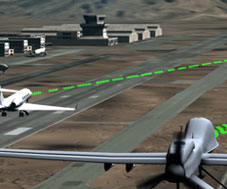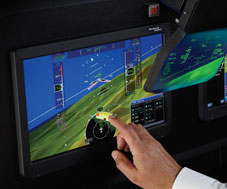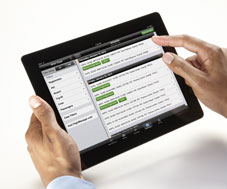In the 21st century, technology and information are nearly inseparable. Aviators are replacing bulky flight bags with mobile tablets that put essential information at their fingertips. Unmanned aerial vehicles are flown from control centers halfway around the world. Passengers clamor for the same level of internet connectivity in flight as they enjoy in their living rooms. Airborne and ground troops rely on real-time video and precise targeting to more effectively and safely complete their missions. And pilots use synthesized landscapes and advanced radar technology to more safely guide their aircraft from takeoff to landing, even in low-visibility conditions.
Equally important is the need to protect that wealth of information from relentless attackers in both the military and commercial realms. And with the highly networked and integrated systems of today’s manned and unmanned aircraft — linked to each other and operators on the ground — the security of command and control functions has never been more important.
Rockwell Collins has pioneered information delivery and security for nearly 80 years. Today, we leverage that heritage to develop systems for the 21st century, like information-rich flight decks, smart targeting systems, real-time battlespace networks and highly integrated flight information systems — all while keeping the information safe and secure.

Fortifying robust, secure information sharing for the modern warfighter
Today’s military radios relay a wide range of tactical data communication, even forming battlespace networks to securely share intelligence. Rockwell Collins continues to pioneer technology through software defined radios like the ARC-210 Gen5, which incorporates advanced networking waveforms to facilitate broad information sharing. Our Tactical Targeting Network Technology (TTNT) waveform allows manned and unmanned aircraft to connect to high-bandwidth, near-real-time networks on the fly. And our sophisticated information assurance technologies and state-of-the-art cryptographic and anti-tampering features are designed to prevent an adversary from penetrating the network or accessing sensitive information.

Leveraging human factors for intuitive access to information
Rockwell Collins’ extensive research into human factors — exploring how pilots and warfighters process and act upon information — has led to innovations that provide users with the right information at the right time. For instance, touch-screen primary displays in Pro Line Fusion® allow pilots to intuitively navigate, create flight plans and configure the system. And our enhanced and synthetic vision technologies — incorporated into head-up displays — allow pilots to fly more safely, particularly in low-visibility environments and extreme weather conditions. In fact, in light of the high percentage of helicopter crashes caused by blinding sand, snow or dust, the U.S. military has selected Rockwell Collins to develop a synthetic vision system for rotary wing pilots that leverages multi-function radar to provide an integrated 3D view of the operational environment, even in low-visibility conditions, enhancing situational awareness.

Making flight departments more effective and efficient
Today's business aircraft owners and operators confront a vast array of requirements for every trip: Aircraft and crew availability, departure and destination airport information, ground handling arrangements, fuel, weather and more. Rockwell Collins' Ascend flight information solutions help them effectively manage every step of their operations, from preflight scheduling and flight planning, to en route services, to post-trip data logging. When integrated with Rockwell Collins Pro Line 21™ and Pro Line Fusion avionics systems, the flight deck's networked capability enables automatic database updates and access to maintenance information. And with the introduction of applications for mobile devices, Ascend's end to end solutions are now literally at operators' fingertips.

